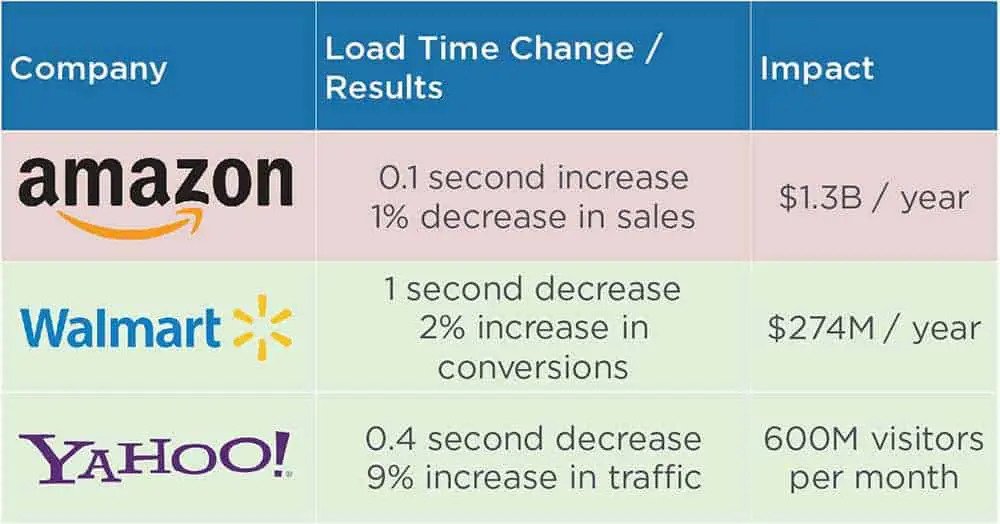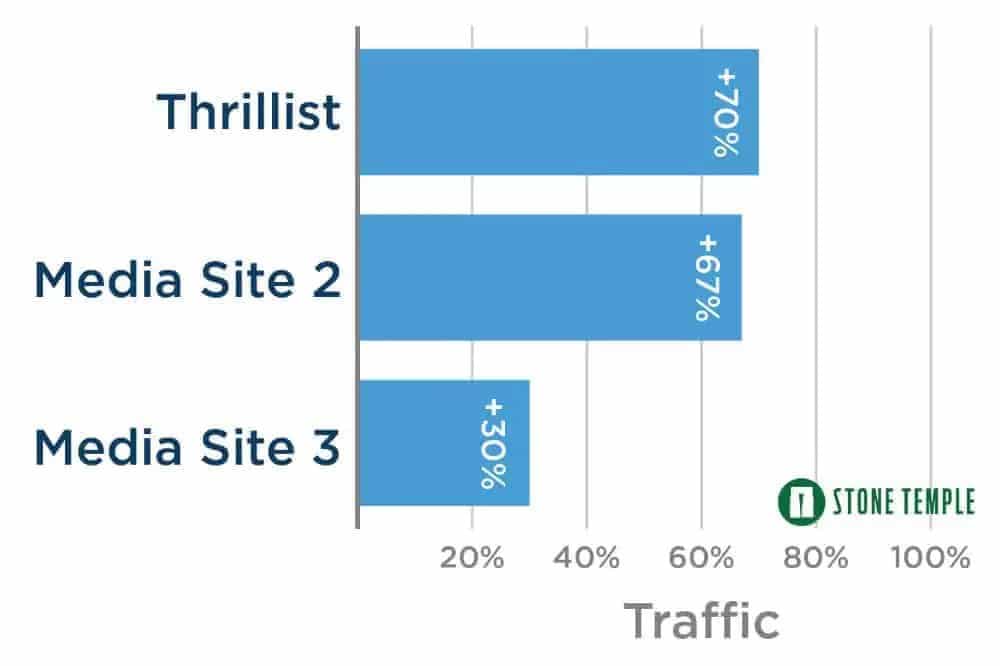Why Google AMP Needs to be Part of Your SEO Strategy in 2022
Google are increasingly concerned with user experience. They want pages and sites to provide as good an experience as possible to all users. It’s one of many important ranking factors they consider when compiling SERPs. The search engine also wants user experience to be consistent across different devices. People visiting pages on a mobile or tablet should not suffer as compared to those visiting on desktop.
Book a Consultation
The loading speed and quality of mobile pages are very important to Google. That’s ably demonstrated by their recent introduction of mobile-first indexing. They’ve begun using the mobile version of many pages for indexing and ranking. That’s instead of always using the desktop versions. Under those circumstances, the experience of mobile users suffered. Mobile versions of pages often differed a lot from the desktop alternative. Almost always, the mobile pages were of lower quality.
Many sites that follow best practices for mobile-first indexing have already been migrated over to it. If your site does get migrated to mobile-first indexing, you’ll get a notification through the Google Search Console.
What does this have to do with Google AMP pages and SEO? It’s quite simple. Google are increasingly interested in mobile-specific user experience. That means site owners and webmasters have to adopt a similar focus. They need to implement a design for their site that provides the best user experience for users of any device.
Google is trying to help them do just that. They’re sponsoring an open source initiative to create fast loading, mobile-friendly copies of pages. Those are Google AMP pages. They’re something you need to know about. They also need to be part of your SEO strategy as soon as possible.
At Accelerate, we have been using AMP for a long time now. It was an important step for us and should be an essential step for your business too. As a result of our user experience being much higher, we started to see our traffic increasing. Our average search positions in Google increased. On top of that, user navigability of our website was enhanced for a platform that consists of more than a quarter of our traffic: mobile. We have written a comprehensive article on the cost of SEO which we encourage you to read.

What Are Google AMP Pages?
AMP stands for Accelerated Mobile Pages. The AMP Project is an open source initiative that is being supported by Google. They are one of the thousands of developers, publishers, websites and tech firms collaborating on the project. According to the project itself, its aim is to make the web better for all.
To do so it ‘enables the creation of websites and ads that are consistently fast, beautiful and high-performing across devices’. These sites and ads will meet those criteria by utilising Google AMP Pages. AMP Pages load near-instantly. That creates the smooth, more engaging mobile experience which both the project and Google are hoping for.
To date, more than 1.5 billion AMP Pages have been published. The AMP Project offers an open source library which provides a straightforward way for other webmasters to build their own pages. The pages are supported by many different platforms and are compatible across browsers. They have three core components.
Three Core Components
AMP HTML
AMP HTML is HTML with some restrictions for more reliable performance. It is basically HTML with some custom AMP properties incorporated. Most tags are regular HTML, with just a few being replaced by AMP-specific ones. Those AMP-specific tags make common patterns easier to implement.

AMP JS Library
The second core component of AMP Pages is the AMP JS Library. It is what ensures fast rendering of AMP HTML pages. The library implements AMP’s best performance practices. It is what gives you the custom tags that differentiate AMP HTML from standard HTML.
One of the AMP JS Library’s key optimisations relates to site elements that come from external resources. These elements are made asynchronous for AMP Pages. That means they operate independently. Nothing from external resources can then block the page from rendering.
Google AMP Cache
The Google AMP Cache is a proxy-based content delivery network for delivering all valid AMP documents. It fetches AMP HTML pages, caches them and improves page performance automatically.
When using the Google AMP Cache, the document, all JS files and all images load from the same origin. That origin uses HTTP 2.0 for maximum efficiency and load speed. The cache also comes with a built-in validation system. That confirms that a page is guaranteed to work and doesn’t depend on external resources.
At the simplest level, Google AMP Pages are stripped down HTML copies of existing pages. They are versions of those pages optimised to load as quickly as possible on mobile devices. They’re also not new. They’ve been around for more than three years.
One of the reasons why some SEO pros remain sceptical about them is because of how they first came about. Before we talk about why you want to adopt Google AMP, let’s look at how the project has developed over the years.
Development
Google AMP Pages were first launched back in October 2015. At that time and for a while afterwards, they were viewed as being just for media sites. That was certainly their initial focus. They appealed to those sites as they provided a way for them to get their pages to display faster on mobile.
Google also sweetened the pot. They introduced their ‘Top Stories’ news carousel which began appearing at the top of search results pages. That was a prestigious position for a page from any news site to be displayed in. Only Google AMP Pages were able to nab the spots within the carousel. The appeal of the accelerated mobile pages to media sites was assured.
There’s a lot to SEO. Professionals in the field have to allocate their time carefully. Many saw Google AMP Pages as the reserve of media sites alone and so spent their time on other things. If that ever made sense, it doesn’t any more.
The scope and impact of Google AMP has broadened considerably since the early days. In gradual increments, Google has introduced AMP into search results. Not only in the news carousel but throughout their SERPs.
A small lightning symbol displayed next to a search result signifies that it is an AMP page. AMP Stories were introduced by the search engine in December of last year. They’re similar to the popular stories element of Instagram. They’re intended to be visually engaging pieces of content made up of interactive photos and text.
They offer another, speedy way for sites to present their content to users. Those AMP Stories also appear right toward the top of a mobile Google search result page. As much as anything else, the introduction of AMP Stories shows how committed Google are to AMP in general.
What also demonstrates Google’s commitment to AMP is how rapidly the project has grown. There are currently over 1.5 billion Google AMP Pages spread around more than 25 million domains. AMP is not something you can afford to ignore any longer. There are loads of reasons why it should be part of your SEO strategy in 2019.
Why You Should Adopt Google AMP Pages
Good SEO is invaluable to any company with an online presence. Anything that can add an extra string to a firm’s SEO bow is worth exploring. Google AMP can definitely do that. Implementing Google AMP is a process that caters to one of the search engine’s current hot topic issues. That is the issue of good user experience for people on mobile devices.
We all know that fast loading mobile pages are popular with users. We also know that loading speed is taken into account by Google and their ranking factors. What you might not know is just how quick AMP pages are to load.
According to the AMP Project, the median time taken to load an AMP Page from a Google search is less than half a second. That’s sit up and take notice speedy. It’s a speed of loading that can make a real difference both to users and to the sites they visit.

Speed Thrills
A fascinating infographic from Neil Patel’s Kissmetrics company reveals some interesting nuggets about loading speeds. More notably, it reveals plenty about what real web users think about loading time and how it impacts their activities online. Amongst the key statistics is the fact that 47% of consumers expect a page to load within two seconds. Fully 40% of web users will abandon a page if it takes more than three seconds to load.
That’s great news for sites with Google AMP Pages which load on average in less than half a second. It’s food for thought for anyone who’s continuing to ignore AMP and the load speed benefits it offers. AMP isn’t about loading speed and user experience alone. There’s a demonstrable link between those things and a company’s bottom line.
Traffic, Conversion & Sales
Rapid loading and the positive impact it has on user experience is great. It might not, however, be enough to convince you of the merits of Google AMP Pages. The impact AMP can have on web traffic, conversion rates and sales figures can’t fail to.
There are loads of case studies that reveal a link between AMP, traffic and conversion rates. There’s also plenty of research showing how loading time can negatively impact sales. We’re going to take a quick whistle-stop tour of some of the facts and figures. That should be enough to show how much Google AMP does need to be part of your ongoing SEO strategy.
Google recently commissioned a Forrester Consulting Total Economic Impact Study into AMP. It looked at the effect of AMP on the traffic, conversion and sales of some websites. The headline findings of the study were unequivocal. We’ve summarised the main ones below:
- 10% Increase in Site Traffic – The study found that the sites asked gained a 10% increase in site traffic from AMP. Sites benefited from the improved discoverability of their new AMP pages.
- Improved Engagement – The study also found that users engaged better with AMP pages. Visitors went to 60% more pages per visit. The time spent on each AMP Page was two times that spent on non-AMP pages.
- 20% Rise in Sales Conversion Rate – E-commerce sites included in the study revealed a 20% increase in sales conversion rates for AMP Pages.
- Long Term Profit Growth – The study found that AMP could have a positive impact on profits in the long term. That was thanks to increased site traffic and improved conversion rates. It was estimated that the bump in conversion rate could be worth up to $677,000. That’s as an increase in profits over three years for the sites surveyed. 10% more web traffic was estimated to be worth around $329,000 in profit growth over the same period.
Some of those findings are at face value quite astonishing. The 20% increase in sales conversion rate for one, is a remarkable figure. It’s backed up by other data. That includes stats on the relationship between load time and conversion rates for the biggest e-commerce sites.

As you can see from the table, the smallest changes in load speed can have a huge impact. Just a 0.1 second increase in loading time for Amazon could lose them fully 1% of their sales. A figure which equates to a massive $1.3 billion over a year.
It’s not only research commissioned by Google that points to how important AMP can be. Stone Temple, a marketing consulting firm, compiled date from ten separate AMP case studies. Those studies looked at the implementation of AMP by sites across different sectors. It then measured the impacts introducing Google AMP Pages had on the companies.
The impact of AMP on web traffic was most marked for the media sites which Stone Temple included. The results for those sites are displayed below:

All three sites enjoyed a massive boost in traffic of between 30% and 70%. It wasn’t only the media sites amongst the case studies which displayed positive results from implementing AMP.
Eight of the ten studies showed AMP to have a positive impact on the company involved. Lower bounce rates and increased session times for site visitors were often reported. Dramatically improved conversion rates were also commonplace.
That was particularly true of NoBroker. NoBroker is an Indian real estate company included amongst the case studies. Their site aims to connect landlords with potential tenants, without using a property broker as a middle-man. After implementing AMP, the site recorded a 77% increase in the number of connections made.
The results of Stone Temple’s extensive research are displayed in the table below:

The studies highlighted in green are those found to have had a positive result from implementing AMP. The two rows highlighted in yellow show sites that didn’t enjoy such positive results. Stone Temple suggest that the less positive results were as a result of implementation problems.
The top row of the table provides a prime example. That row shows the results from the implementation of AMP by Beach House Center for Recovery. They’re a lead generation site in the behavioural health niche. They introduced AMP to their WordPress-based site using the AMP Automatic and AMP for WordPress plugins.
The AMP pages they introduced did not compare well with their non-AMP pages. People visited fewer AMP pages per session and spent less time on each page. Bounce rates were also increased for the AMP pages. An in-depth analysis of the poor metrics revealed a very clear cause.
Beach House’s implementation of AMP had featured two huge errors. Firstly, the main menu on their AMP Pages was broken. It was displaying an illogical set of pages. That meant visitors wouldn’t click on anything there. The pages also had no access to sidebars or CTAs of any kind.
If you take those mitigating factors for poor results into account, the conclusion to be drawn from the available research is clear. Introducing Google AMP Pages to your website can deliver a range of hugely beneficial results. Web traffic, user engagement and conversion rates have all been proven to increase. That will inexorably lead to a boost in profits which can be tied directly to AMP implementation.
The Bottom Line; Good AMP Implementation is a Must
Results like those displayed by the above research are too good to ignore. Google AMP Pages can have a profound positive effect on websites across all industries. Implementing AMP pages helps with web traffic, conversion rates and overall sales.
Improved organic traffic, better conversion and a resulting bump in sales is the main goal of SEO. The only conclusion is that Google AMP has to become a part of your SEO strategy, sooner rather than later.
The nature of the AMP Project as an open source initiative makes it easier to implement AMP. That doesn’t mean you should approach it as a plug and play scenario. Trusting that the available plugins will do all the work for you won’t cut it. That was exactly what caused the problem for Beach House in Stone Temple’s case study.
What you need to do is to be smart with your implementation of AMP. Make sure you understand exactly how AMP works. This page should have given you a good idea, but there’ll be practicalities which relate specifically to you. For instance, do you need to look at how to handle the multimedia elements of your site when creating AMP versions of your pages?
It’s only by understanding such things that you can implement AMP properly. Once you do, you’ll start to see those all-important results. Traffic, conversion rates and sales will likely enjoy satisfying bumps. That can only be good news for your SEO efforts as a whole. Not to mention for your company’s bottom line.
Optimising your site for AMP is therefore obviously essential. With that being said, it can be really difficult and time-consuming. Accelerate has a team of experts dedicated to optimising sites for mobile. If you feel you need help or consulting for more problematic tasks such as migrating to AMP, then contact us. Don’t let yourself fall into irreversible problems.


